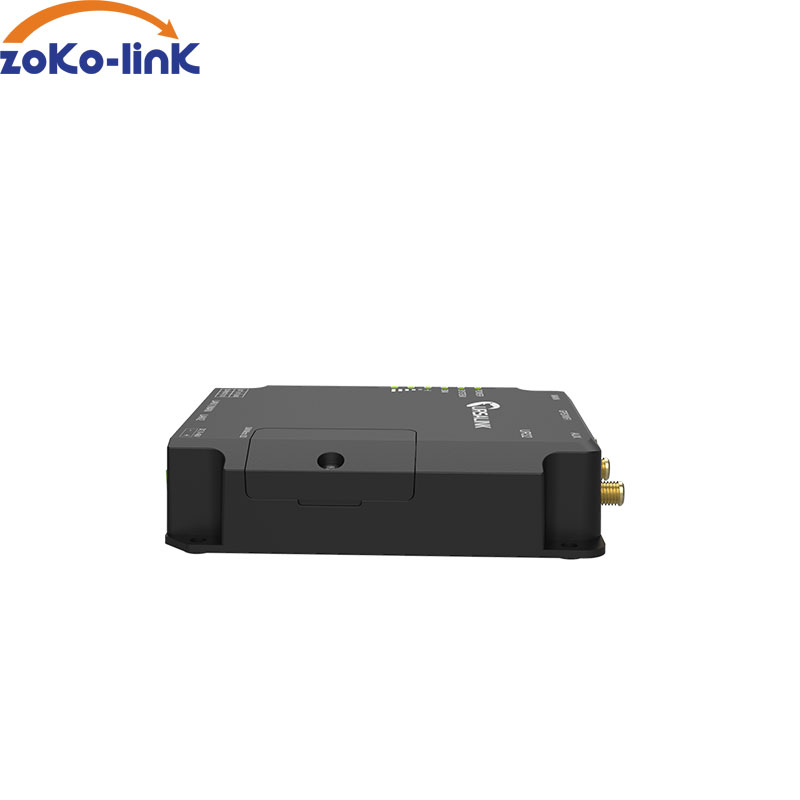

 咨询热线 15388025079
咨询热线 15388025079 时间:2022-01-02 18:39:18 浏览量:918
What are the networking modes of 4G DTU? What are the main applications of DTU?
4G general wireless packet service is a wireless packet switching technology based on the GSM system, providing end-to-end, wide-area wireless IP connection. 4G makes full use of shared wireless channels and adopts IP Over PPP to realize high-speed and remote access of data terminals. As a transition technology (2.5G) from the existing GSM network to the third generation of mobile communications, 4G has significant advantages in many aspects.
The networking of the 4G wireless monitoring system is relatively simple. The 4G DTU can be directly connected to the user equipment through the RS-232 or RS-485 interface.
Data terminal (4G DTU) access: 4G users can choose CMNET and APN to access the network. CMNET is usually used for public users, and APN is for industry users, usually in a group. Users need to set a user name and password, which is more secure good. In addition, APN users can apply for binding fixed IP addresses of mobile intranets.

The network of the data center is slightly more complicated. Combining the characteristics of 4G bearer network, according to the GPRS application field, we provide data center networking solutions with multiple application forms for reference by developers. The choice of networking form is mainly determined by the amount of business data, reliability requirements, data confidentiality, and network conditions.
Plan 1: 4G MODEM access method (the monitoring center is used as a data terminal to bind a fixed IP address)
This solution is suitable for enterprises that do not have access to the Internet and have extremely high security requirements; it is suitable for applications that require less total data bandwidth, such as a data acquisition system using Polling transmission protocol; all data runs in the 4G network; all are required 4G terminals can communicate directly; the 4G data terminal access point in the data center is bound to a fixed IP address. (That is to provide at least one SIM card bound to a fixed IP address)
Plan 2: Internet access method (the monitoring center accesses the wireless network via the Internet)
The enterprise has a stable and permanent connection to the Internet; the router port address on the enterprise side and the IP address of the monitoring center should be public and provided by the ISP that provides the enterprise Internet connection. The customer of this solution must first operate from the Internet The provider applies for a fixed IP on the public network. The center uses the public network to fix the IP, and the monitoring point directly initiates a connection to the center. Or the client company has a server connected to the Internet and has a fixed IP on the public network. However, considering the stable operation of the server, other application software is usually not allowed to be installed on the server, so the GPRS data center system cannot be installed on the server. You can use NAT port mapping to solve this problem.
This kind of scheme is very good in terms of real-time and stability, but the cost of using fixed IP on the public network is relatively high.
Scheme 3: Dedicated line access method (the monitoring center is connected to the wireless network via DDN dedicated line)
This kind of scheme is suitable for enterprises that do not have access to the Internet or enterprises have high security considerations, and are suitable for use in industries such as finance, securities, and industrial monitoring; enterprises connect to the router of China Mobile through a dedicated line, and the access router on the user side must provide a public IP address.
Solution 4: Dynamic IP solution
For application systems without fixed IP, the networking method is the same as "fixed IP access". The key to solving the problem lies in the data center. There are currently two solutions:
1. SMS sending IP
When the IP address of the data center changes, the center can notify the terminal device of the current latest IP address and notify its connection by means of text messages. SMS can be sent via a GPRS modem via the Internet or USB interface.
2. Dynamic domain name resolution
When using the dynamic DNS method, there are a few things to prepare first.
The first is Domain Name, you need to apply for a group of third-level domain names or second-level domain names.
The second is that you need to go to the domain management center to specify the dynamic DNS service.
When the preparation work is completed, a Client software will be obtained from the domain management center to maintain the dynamic IP and Domain Name. When the computer in the data center is turned on, the dynamic IP can be obtained from the ISP, and then the Client software and The DDNS server is online and refreshes the domain name and IP comparison. The GPRS terminal can interpret the front and back of the Domain Name through DNS, and then establish a connection.
4G DTU can provide the following types of applications:
• Transportation industry: vehicles and intelligent dispatching.
• Finance, securities and commerce: wireless POS, wireless ATM, vending machines, mobile banking, etc.
• Real-time release of stock market trends, weather forecasts, traffic information, etc.
• Public security industry: access to remote databases anytime, anywhere.
• Telemetry, remote sensing, remote control: such as meteorological and hydrological systems to collect data, remotely measure and alert disasters, and operate remotely.
• Provide VPN services to enable employees of the company to keep in touch with the headquarters anytime, anywhere, and reduce the company's cost of building its own WAN.
• Provide network application services based on GPRS bearer services and various applications based on WAP.
• You can check the inventory and turnover of the vending machine through your mobile phone or computer.
上一页:Industrial IoT Smart Gateway Application Field
下一页:NB-IoT and LoRa, Who is the future trend of the Internet of Things?
相关推荐
相关产品